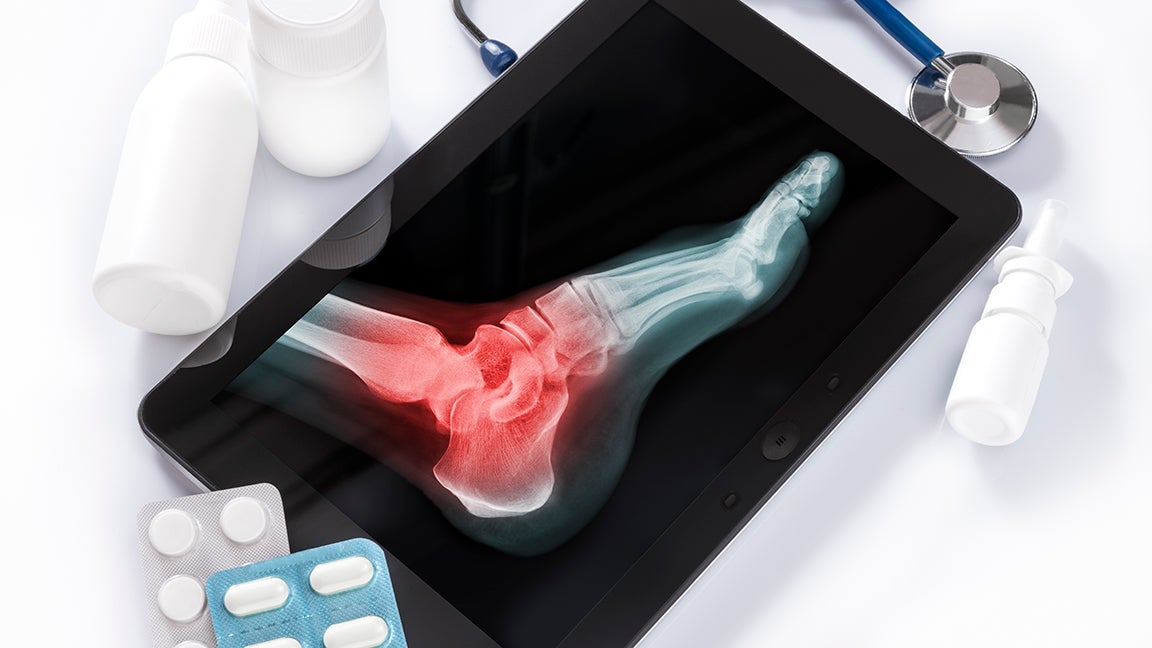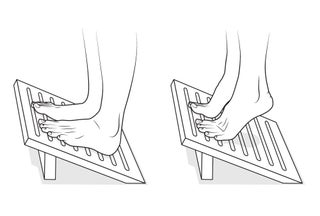Each time you land in your running stride, forces are being propelled from the ground into your body, moving from the muscles into the bones. The way the force is received and which muscle receives it helps your brain decide which bones to move and joints to bend. In the process, one structure is responsible for the transmission of force from the muscle to the bone: tendons.
Because it’s subjected to high force loads, and with poor blood supply, a tendon can easily become worn-down, leading to a tendon dysfunction. In runners this most often shows up in the lower limb tendons: patellar, Achilles, hamstring, peroneal, and anterior tibialis tendons.
The prevalence of tendon-related injuries and the performance costs associated with them is not lost on researchers and clinicians. Working together, they are seeing similarities in treatment protocols for tendon issues. Moreover, statistically supported studies have offered a new way to look at treating, rehabilitating, and preventing tendinopathies.
Progressive Loading
These studies have concluded the most effective treatment method to get runners back to running quickly and effectively is progressive loading. Tendon specialized researcher Peter Malliaras says that for all tendon issues, a plan with progressive load, respecting pain, has been shown to be effective. This treatment involves loading the tendon via weight or amount of impact in a progressively increasing manner, i.e., increasing weight or increasing sets. For example, doing seated calf raises where load is increased by number of repetitions or by adding weighted barbells.
In the context of running, progressive load means scaling back intensity and volume, then gradually increasing them as the tendon tolerates it. For example, a runner doing 60 miles per week who presents tendinopathy symptoms would be encouraged to reduce their mileage to a level where pain is minimal during running (i.e., 30 miles per week), and to eliminate any high intensity efforts like fartleks or tempo runs.
Rest Not Required
Previous treatment methods involving rest are no longer suggested, as the long-term outcomes are not successful. While pain may initially dissipate after rest, it returns with time back in the activity as the tendon has not been properly rehabilitated.
“Training for sport comes from doing sport,” says Malliaras. And being inactive is not going to allow a structure to regain functionally active capacity. This is good news for runners because most treatment providers, aware of the research, will be in favor of allowing you to continue running while simply altering the load (i.e. distance, time and intensity).
A critical caveat of this treatment method however, is to recognize that it must be individualized. The load level to start, the load level to progress, and the advancement to energy-storage exercises are unique for every person and their tendons. If this is not properly outlined and monitored, the tendon could potentially regress instead of progress.
Brodie Sharpe is a runner-specialized physiotherapist and puts a lot of time and thought into crafting individualized rehabilitation plans for runners presenting with tendinopathies. He explains how he diagnoses based on symptoms: “If a runner can point to the location of their pain with one finger and it is over the site of a tendon, this greatly influences the likelihood of a tendinopathy.”
The progressive load treatment methodology should begin as soon as possible, Sharpe explains, starting with “a level that is tolerated and slowly building up.” The starting point will be individualized, ranging from low level calf raises to simply decreasing mileage. If there is no irritation to the tendon during the exercise or in the 24 hours post-exercise, that’s a good indication the loading capacity is suitable.
For runners, tendinopathy will sometimes be painful at the beginning of a run, then settle down and hurt less as the run continues. The following day, however, the pain is likely to show up if the tendon has been overloaded. Runners should take note of this as an indicator of tendon stress.
Choose The Right Doctor
As the patient, it is important to advocate for yourself and seek out a healthcare professional who knows the importance of continuing to run and progress load for treatment, and who is also adept at crafting appropriate loading volumes.
However, it is imperative to also recognize that this science is still evolving. While the understanding has progressed, there remain several areas with lacking research. Tom Goom, a physiotherapist, researcher, and owner of the popular Running-Physio resource site says, “There are a lot of theoretical papers, narrative reviews, biomechanical studies etc., but very few testing treatments.” What actually works with runners and how can the results in a lab be transitioned to a practical application?
A systemic review published in June 2019 is one of the first of its kind to look at exercise therapy in treating tendinopathies of the lower limb, but experts agree that more work needs to be done on narrowing down specific exercise programs which are most effective.
There is currently no set of guidelines or recommendations for practitioners around exercise treatment other than the importance of progressive loading. Meaning that a runner may get a different exercise program from different therapists.
“Not all of these are going to be equally as effective,” explains Malliaras. This is why he and his team have completed data collection on exercise programs for the Achilles tendon. They are testing four different types of loading protocols with the goal of finding conclusive evidence on the one that works best.

Beware of Quick Fixes
Steroidal injections are another type of treatment that is often misused or misunderstood. Keen to get back to running quickly, runners can be misled into thinking they are an effective treatment, as they do often provide relief in the short-term–especially on lower limb injuries.
As a long-term, sustainable option however, the research shows they are not the solution. Malliaras explains that the pain will initially be mitigated, making the injection seem successful, but it will return after the athlete has been running for a period of time.
Multiple steroid injections may have negative long-term consequences. “A quick steroid fix is never a good option,” says Malliaras. It is better to have a combination of steroid and exercise, or simply an effective exercise-loading protocol. While the latter may take longer, it will also provide lasting results that will allow runners to return to running completely, not temporarily.
Malliaras warns that runners also need to be mindful of the use of imaging. The research has shown that diagnosis based on imaging is not indicative of pain level, time required for recovery, or the correct treatment protocol. The best indicators are pain and function.
The Culprit: Too Much, Too Soon
Despite the areas of research that await to be covered, there is a sound understanding of the cause of tendinopathies: injury occurs when the load capacity is exceeded. This means that while a clear recovery exercise protocol may still be alluding researchers, we do know how to keep tendon injuries at bay so as to continue running.
It comes down to load management, avoiding short-term passive treatments, and reducing the risk of overloading the tendon. “Being methodical with your training and running at an intensity high enough to allow adaptation without overloading it towards a reactive state is the key to success,” says Sharpe. He also notes the importance of working with an experienced professional to help in combining a runner-specific designed strength and conditioning routine, with an individualized running program.
Perhaps most importantly when it comes to tendinopathy is accurate education to ensure practitioners and runners alike are all on the same page: “We need to help people understand tendon pain and recognize that the tendon can strengthen when loaded in the right way, similar to how muscles get stronger in the gym,” says Goom.



